Coffee, the soul-warming beverage, the elixir of life and also the producer of used coffee grinds!
There are, in fact, many uses for coffee grounds: from in the garden to facial treatments! Here are some brilliant uses to get you thinking about your morning coffee – or have you scouting around for free grinds from local cafes!
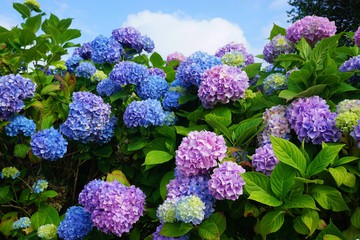 As a fertiliser – For gardeners who can talk about fertilisers in N-P-K language, the coffee grounds are 2.5 – 0.3 – 0.6. Various studies have different numbers but what it shows is the grounds are not highly concentrated as a fertiliser, with much more nitrogen (N) than anything else. That’s good for leaf growth but it isn’t going to do much for flowering or fruiting. Blending coffee grinds and wood ash from your fire (untreated timber of course) would add more balance and result in a pretty good general fertiliser.
As a fertiliser – For gardeners who can talk about fertilisers in N-P-K language, the coffee grounds are 2.5 – 0.3 – 0.6. Various studies have different numbers but what it shows is the grounds are not highly concentrated as a fertiliser, with much more nitrogen (N) than anything else. That’s good for leaf growth but it isn’t going to do much for flowering or fruiting. Blending coffee grinds and wood ash from your fire (untreated timber of course) would add more balance and result in a pretty good general fertiliser.- Acidic regulator – Coffee grinds are appreciated by plants that like an acidic soil. Common hydrangeas are a natural litmus test and will turn blue in acidic soil (and pink in soils that are alkaline). Roses will also benefit from coffee grinds as will camellias. If used more generally, the grinds can be combined with lawn clippings or leaves to reduce the acidity.
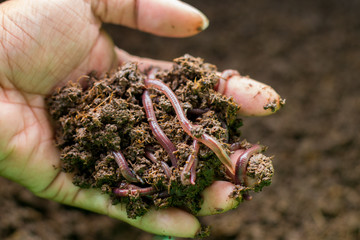 Compost it for later – If grinds are added to compost then they should account for no more than 10% to 20% of the composted material. Despite being brown, coffee grounds are “green” matter because they are heavy in nitrogen, so make sure you have plenty of brown matter too (like fallen leaves). Also beneficial, worms may be attracted to your compost with the addition of old coffee.
Compost it for later – If grinds are added to compost then they should account for no more than 10% to 20% of the composted material. Despite being brown, coffee grounds are “green” matter because they are heavy in nitrogen, so make sure you have plenty of brown matter too (like fallen leaves). Also beneficial, worms may be attracted to your compost with the addition of old coffee.- Slow-release nitrogen fertilizer – When added directly around plants, coffee grounds will act as a slow-release fertilizer providing long-term nitrogen input.
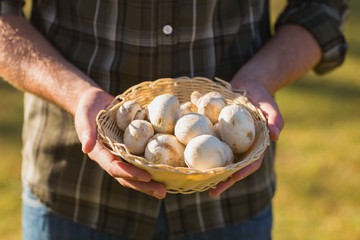 Grow mushrooms – Coffee grounds are an excellent growing medium for mushrooms. Carrots and radish are also coffee lovers, so mix the grounds into their seed trays and beds.
Grow mushrooms – Coffee grounds are an excellent growing medium for mushrooms. Carrots and radish are also coffee lovers, so mix the grounds into their seed trays and beds.- Bug repellant – Coffee grinds can be used as a repellent for home and garden pests like ants, snails, and slugs. The grounds can be applied as a diluted spray solution or directly. Apparently, ants are not coffee drinkers because sprinkling coffee grounds at their entry points in a home or in the garden will keep the blighters away.
- Bug trap – place moist coffee grounds into the bottom of a jar, then line the top inside of the jar with double-sided sticky tape which acts like flypaper and catches cockroaches, which apparently, are coffee lovers!
- Cat deterrent – Coffee grounds can be used to deter wandering cats from ‘using’ your garden instead of theirs, so sprinkle the grinds around potential crime scenes.
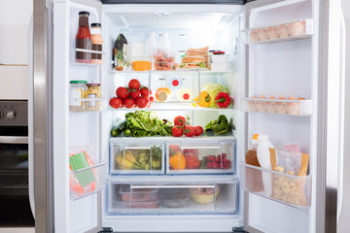 Odour eliminator – Grounds can be used as an odour sponge. Place some in a small open-top jar and leave in the back of the fridge – or drop a tab or two into your food waste bin to absorb smells. Keep a little cup of coffee grounds near or under your sink, and rub a handful of them on your hands after chopping garlic or onions – or other smelly things.
Odour eliminator – Grounds can be used as an odour sponge. Place some in a small open-top jar and leave in the back of the fridge – or drop a tab or two into your food waste bin to absorb smells. Keep a little cup of coffee grounds near or under your sink, and rub a handful of them on your hands after chopping garlic or onions – or other smelly things.- Cleaning abrasive – Add some grounds to your dishcloth to use as a cleaning abrasive. They will act like a soft sandpaper to get rid of stubborn stains on pots and pans – or on handyman tools. While used grounds are abrasive, they aren’t so harsh that they will damage the surfaces in your kitchen. (Just be sure not to accidentally scrub grounds into cracks where they might leave behind stains!)
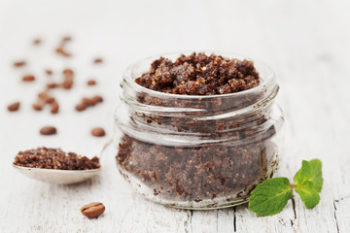 Body scrub and cellulite treatment – Grounds can be used as a hand scrub or an exfoliating body scrub. Just add some almond oil and your favourite essential oil, and get scrubbing! For cellulite scrub for ten minutes, twice per week, on any areas affected by cellulite. The scrub will break down fat deposits.
Body scrub and cellulite treatment – Grounds can be used as a hand scrub or an exfoliating body scrub. Just add some almond oil and your favourite essential oil, and get scrubbing! For cellulite scrub for ten minutes, twice per week, on any areas affected by cellulite. The scrub will break down fat deposits.- Flea repellant – A tablespoon of used coffee grounds added to your dogs shampoo on bath day, will help to repel fleas.
- Clean out the fireplace – Coffee grounds will make the process of cleaning out your fireplace much easier and less messy. Gently scatter old used coffee grounds over the ashes to weight them down and prevent the huge clouds of smoke that often arise when performing this arduous task.
By Frank and Dr Muriel Newman.







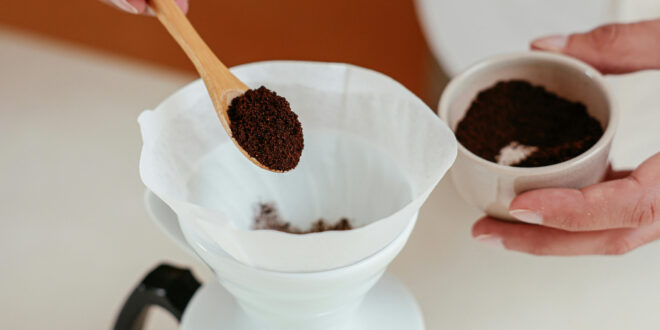

Nadege Bourdin Fayard - 7 years ago
you can also use it to clean your oven. It does miracle